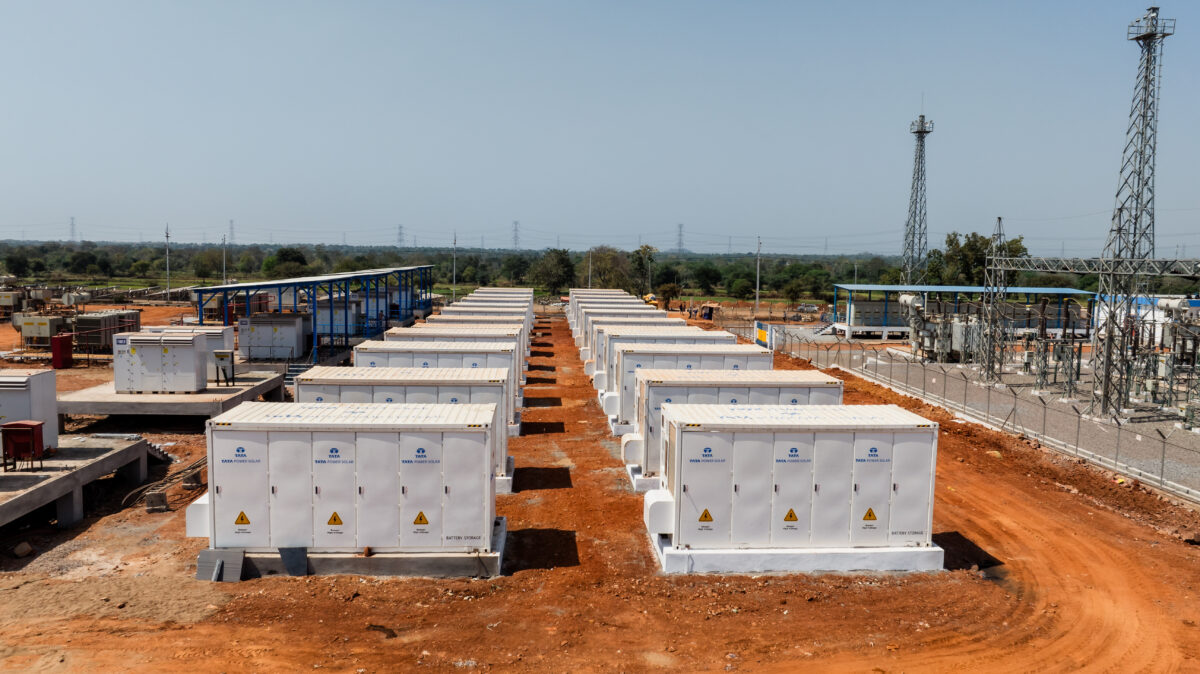India needs an advanced battery energy storage system (BESS) ecosystem with over 238 GWh of capacity to support its targeted non-fossil energy capacity of 500 GW by 2032, said experts at the 4th Edition of the International Conference on Stationary Energy Storage India (SESI) 2024.
The experts discussed the rising penetration of renewables in the energy mix and various system integration challenges affecting the energy storage capacity expansion.
“From capacity expansion to being a global investor-friendly destination in the segment, India has achieved a lot in less than a decade. Our existing 190+ GW of non-fossil-based capacity is a testament to this growth story. At one end we are trying to get more and more solar and wind into the grid, but also we are bringing in a lot of other energy mix. The flavour is changing and the flavor now requires much effort from the manufacturing side. And that’s where MNRE’s role is now coming into play. We do need good best practices followed in the manufacturing industry. We do need advanced chemistry cells for stationary storage applications to be manufactured in India,” said Dinesh Jagdale, Joint Secretary, Ministry of New and Renewable Energy.
“India is poised for rapid deployment of BESS and pumped hydro to complement the renewable energy deployments as part of the ambitious targets set by Prime Minister Narendra Modi. With the Stationary Energy Storage India Council (SESI), the India Energy Storage Alliance is all ready to work with a various set of policies. The most exciting part is that now we are entering into the execution part of our plans,” said Rahul Walawalkar, President, IESA.
Rajnath Ram, adviser (Energy), NITI Aayog, highlighted the need for an integrated policy for storage systems. “We need to figure out ways to store more energy as and when the demand and energy generation increases. Let’s imagine that we have about 1,800 gigawatt per hour energy demand by 2047, then we need to expand on the energy storage systems as well. We need to have a very integrated policy for building the storage system within the country,” he said.
“The rising penetration of renewables in the energy mix also necessitates increasing energy storage capacity to address system integration challenges arising from the variable nature of renewable energy and supply-demand mismatch. It’s high time for us to now look at how can we bring in firmness, flat curves, and that extra energy which can probably be looked at as the tailwind today into the storage space,” said Debi Prasad Dash, Executive Director, IESA and Secretary, US-India Energy Storage Taskforce (ESTF) secretariat.
The Solar Energy Corp. of India Ltd (SECI) has recently commissioned a 100 MW solar PV project with 40 MW/120 MWh battery energy storage system, the biggest grid-connected storage yet in the country. The capacity was commissioned at Rajnandgaon in the Indian state of Chhattisgarh.
“Pricing is a major factor in battery energy storage and we are estimating that the prices would fall for batteries close to 140 dollars per kWh, but the estimations also say that the prices would further reduce to 50 dollars per kWh, which is the need of the hour,” said Prashant Upadhyay, Senior Manager, SECI.
This content is protected by copyright and may not be reused. If you want to cooperate with us and would like to reuse some of our content, please contact: editors@pv-magazine.com.









1 comment
By submitting this form you agree to pv magazine using your data for the purposes of publishing your comment.
Your personal data will only be disclosed or otherwise transmitted to third parties for the purposes of spam filtering or if this is necessary for technical maintenance of the website. Any other transfer to third parties will not take place unless this is justified on the basis of applicable data protection regulations or if pv magazine is legally obliged to do so.
You may revoke this consent at any time with effect for the future, in which case your personal data will be deleted immediately. Otherwise, your data will be deleted if pv magazine has processed your request or the purpose of data storage is fulfilled.
Further information on data privacy can be found in our Data Protection Policy.